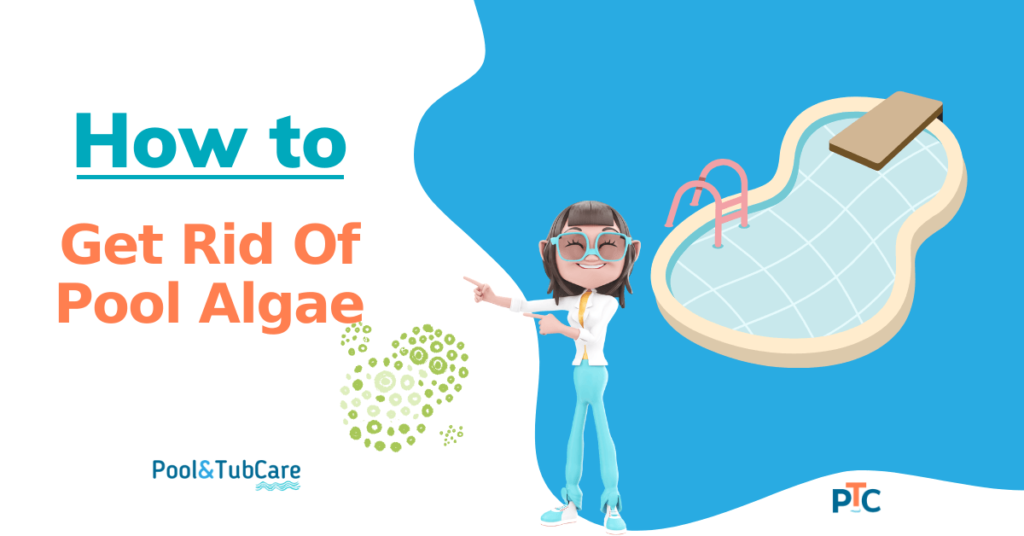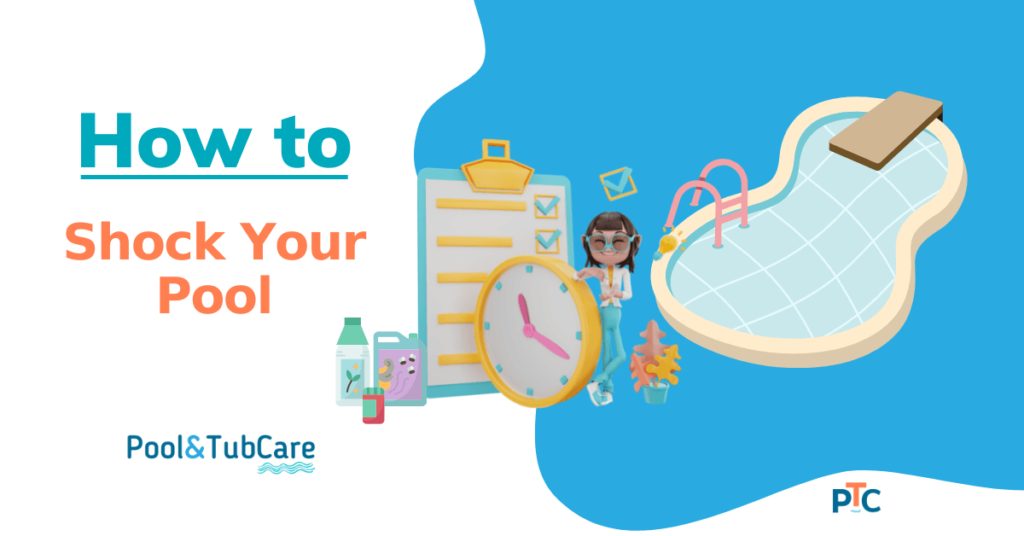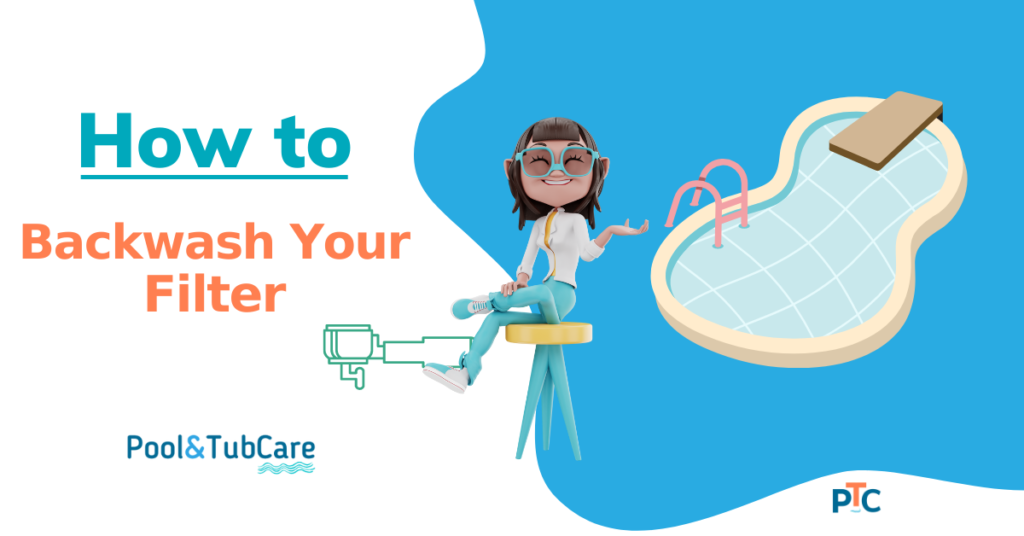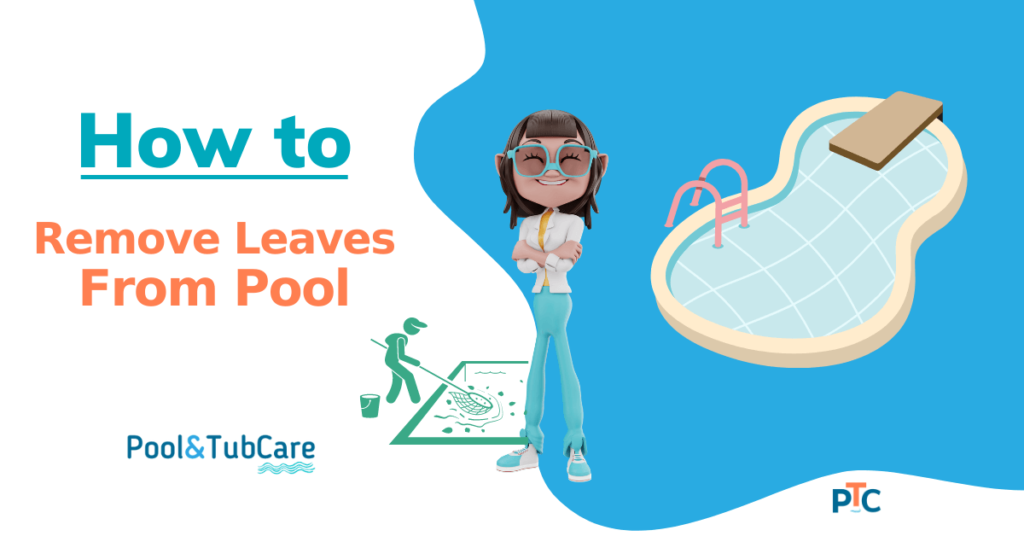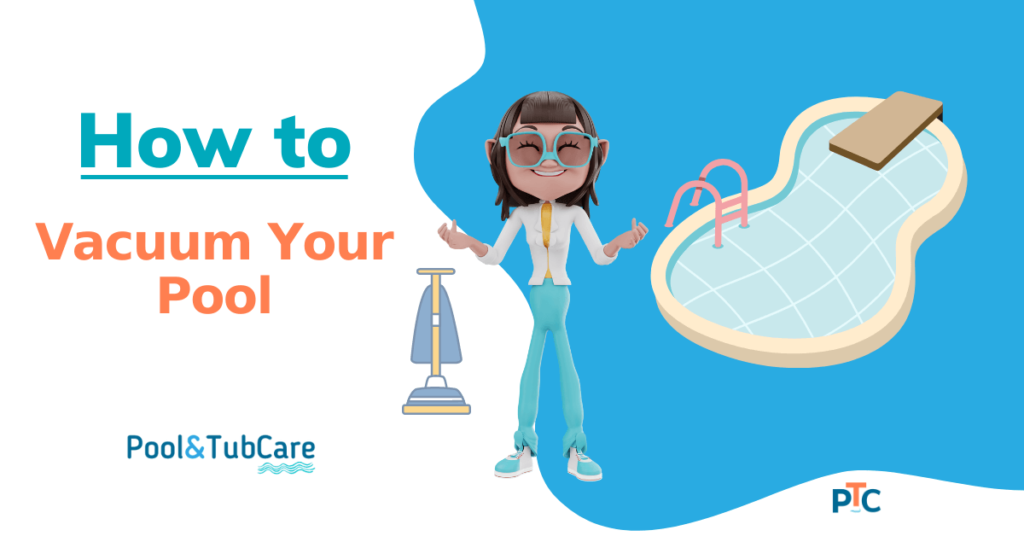If you’ve noticed algae starting to grow in your pool, it’s important to take action quickly to get rid of it. Algae can spread rapidly and make your pool unusable if left unchecked.
There can be many reasons for Algae growth in pools, like faulty filters or contamination from outside water bodies. Whatever the reason, algae is unsightly and can be challenging to eliminate.
You need to act on the first sight itself. Otherwise, it will progressively become difficult to remove.
But don’t worry if you don’t know how to deal with algae; we’ve got you covered.
The best method to kill algae if it is in its starting phase is by shocking your pool with 10-20 ppm chlorine. Chlorine is a strong algae killer as it oxidizes it. If your pool has algal bloom, you need to brush pool walls and vacuum before doing a strong chlorine shock of 20-30 ppm.
In this post, I’ll discuss how to get rid of algae and its spores in the pool quickly. So read on for all the details.
What Kind of Algae Contaminate Pools?
Many different types of algae can contaminate your pool. Figuring out what you have in your pool can help you take the best possible action to remove it. Here are the three most common types that can contaminate pools:
Green Algae:
This is the most common type of algae found in pools. This type of algae is usually green in color and has a slimy texture. Green algae can increase and spread rapidly if left unchecked.
There are different types of green algae ranging from light teal green to darker green(blacker) shades of algae. The darker the algae, the more difficult it is to get rid of. Sporadic spots of light algae can be cleaned easily with chlorine or algaecide.
Yellow Algae:
Yellow algae are called so because it’s yellow or brown and has a Mustard smell. They’re the second most common type of algae but can be difficult to remove.
They grow in parts of the pool with poor sunlight and look like sand.
You need to give extra shocks and do additional rounds of cleaning to clean your pool from yellow algae.
Black Algae:
Black algae are dark-colored and have a rough, sandpaper-like texture. Compared to green/yellow algae, this one is much tougher to kill. Black algae can stain your pool surfaces.
If you don’t remove black algae altogether, it will return quickly. They get deep into the pool’s walls and need brushing for cleaning. For it to be completely gone, you need to do multiple rounds of thorough cleaning.
These three are the commonly found algaes that grow in pools. There are a few others you will most likely not encounter.
Why is it Important to Remove Algae Quickly?
Algae growth in pools can have many negative consequences, so removing it as quickly as possible is important. Here is why you should remove algae quickly:
- Algae can spread quickly and take over your pool if left unchecked
- Algae can make your pool unusable and unsightly
- It can cause staining and erosion on pool surfaces
- Algae can clog filters and other pool equipment
- It will be difficult to kill if it’s allowed to grow unchecked
- It can lead to the growth of bacteria and other microorganisms underneath the water due to a lack of enough sunlight
These are just some reasons you should remove algae quickly if you see it starting to grow in your pool. Algae can be a significant problem if left unchecked, so it’s important to take action quickly.
How to Remove Algae from Your Pool?
Here is the process of cleaning your pool step by step. Be thorough in each step as shady work or a quick approach may lead to regrowth of algae causing more time waste.
1. Brush the Algae
Algae can grow on walls and surfaces and make them sticky and slimy and damage them in the long term.
You need to use a pool brush to scrub the walls and floor of your pool to loosen the algae. You need to brush the complete area where algae are visible.
Also, cover all the areas like ladders, and steps where algae might be lurking but is not visible directly.
For a concrete or plaster pool, a wire or sturdy pool brush will be required.
2. Use Algaecide
Algaecide is a powerful chemical that helps kill algae and can be a very effective tool in controlling algae growth.
Use algaecide when people are not swimming in it as it can make it pool unsafe for swimming for some time. When using algaecide, follow the instructions carefully and never mix it with other chemicals.
Some chlorinating tablets also come with algaecides, that are released in to pool slowly, and they are safe.
Keep children and pets away from the pool while using an algaecide.
Algaecides are very potent in controlling early algal growth, but this step is not essential. If you don’t want to use Algaecide in your pool, just skip this step and focus on the shocking step with a thorough cleaning.
3. Collect Floating Algae/Debris
After you have brushed the algae, you will need to remove any remaining debris from the water’s surface. You can use a skimmer or do manual scooping of the debris out of the pool.
Remove as many floating things as you can, including algae.
4. Vaccum Your Pool Manually
You must remove as much algae as possible before you start shocking or chemical treatment.
To do that, manually vacuum your pool. Everyone loves automatic vacuum pumps, and they are bliss for pool owners. But in the case of algae cleaning, you need to do manual vacuuming as an automatic one will not do the job.
This will ensure that algae-containing water is thrown out of the pool.
This is not essential in case there is a water shortage in your area.
5. Test Water Chemistry and Adjust as Needed
After cleaning the pool and filter, it is essential to test the water chemistry to ensure it is balanced. Test the pH levels, alkalinity, and calcium hardness levels.
If any of these levels are out of balance, you must adjust them accordingly.
High pH and low alkalinity inhibit the shock. On the other hand, you can lower the pH of water as chlorine is more potent at lower pH.
6. Shock Your Pool
Shocking your pool is adding a large amount of chlorine to the water all at once to kill algae and other contaminants.
Important: Use non-stabilized chlorine like cal-hypo whenever possible.
You should shock your pool on a regular basis to keep it clean and safe for swimming.
However, you may need to shock your pool more often if it is prone to algae growth.
When shocking your pool, be sure to follow the directions carefully and never mix the shock with other chemicals. In addition, be sure to keep children and pets away from the pool while you are shocking it.
Depending on the Algae type, your pool may need 2X, 3X or 4X shock. Black algae are generally treated with 4X shock.
Your pump should run for at least 6-8 hours during shock, so it is distributed thoroughly. Start the shocking process in the evening as the sun reacts with chlorine which will reduce the effect of shock.
Tip: It is recommended to shock your pool regularly to keep it free from unwanted growth. Shock your pool monthly and weekly in case of heavy usage days. For weekly shocks, you can use non-chlorine shock.
7. Filter The Water
After the shock pool will become cloudy due to dead algae. Keep on running the filters for 10 hours or till the time water becomes clear.
Don’t use the pool until the water is clear and the chemistry test (including chlorine levels below three ppm) is done.
If your pool is heavily infested, you need to repeat the above steps of brushing and shocking multiple times unless you are satisfied.
8. Balance Your Pool’s pH Levels
After your pool is clean and the water is clear, it is essential to test the pH levels and adjust them as needed. The acceptable pH range for a swimming pool is between 7.4 and 7.6.
You can use pool test strips or a digital pool tester to test the pH levels of your pool water. For low pH, you need to mix pH increaser to the water.
On the other hand, for too high pH levels, you will need to add a pH decreaser to the water. These products are easily available at your local pool supply store or you can order them from Amazon.
9. Clean Your Filter
After cleaning algae in your pool now, it’s time to clean the filters. Depending on your filter type, you need to clean it differently.
If you have a cartridge filter, you must remove the cartridges and rinse them off with running water.
If you are using a sand filter in your pool, you need to backwash the filter to clean it.
Always try to follow the instructions that come with your filter to know how to clean it properly.
Floc Your Swimming Pool
If you want to clean out everything from your pool, you can use flocculants for cleaning. These chemicals remove any small particles of dirt and algae still in the water.
Or, if you have only mild algae in the pool, then instead of all the above steps, you can just do this step.
You can find flocculants after that to use it just follow the instructions given on the package.
Flocculants react with the particles, forming bonds and drawing them to the pool’s bottom. Then after some time, you can filter out those particles.
Here are the steps to follow:
- Add the recommended amount of flocculant and turn the valve to Recirculate setting so that the mixture is mixed in the whole pool
- Let it settle overnight after mixing
- Turn the multiport valve to waste so the dirty water does not clog your valves. (If you use a cartridge valve, we do not recommend this method as they do not have a waste setting, and your valve will be clogged and needs to be replaced after the process)
- Vacuum the pool slowly and remove all the sedimentation. Keep adding water to maintain pool water levels; if water becomes cloudy, wait some time for particles to settle down.
- Keep running the filter until the water is clear
- Clean the filters appropriately
- Test the pH of the water and balance it before using the swimming pool again
How to Prevent Algae from Growing in Your Pool?
Dealing with algae growth in your pool takes a lot of effort and patience. After clearing your pool of all the algae, keep track of things to prevent it from growing back. Here are some tips:
1. Test The Water Regularly
To keep your pool safe from algae growth, it should be clean. To keep your pool clean, you need is to test your pool water regularly and keep the pool chemistry balanced.
Test your water regularly, like weekly, for all the chemicals. For chlorine, you should be checking it every alternate day, if not daily.
You can use pool test strips or a digital pool tester to test the pH levels of your pool water. Balance the pH levels if they are off.
2. Run Your Pump daily
Circulating water is a must for a pool’s health.
To keep the water circulating, it is important to run your pool pump for at least 8 hours a day.
If the water is circulating properly, it will prevent algae growth.
When water becomes stagnant, many kinds of bacteria and algae can grow in it as chemicals like chlorine are not getting into that part of the water.
When your pool is in regular use, make sure to keep the water circulating so that chemicals are mixed properly in the whole pool water.
Related: When and how long to run your pool pump!
2. Shock Your Pool Regularly
You should shock your pool regularly to kill any algae that may be growing in the water. Shocking your pool once a week is usually sufficient.
While shocking your pool, you add a large amount of free chlorine to the water (10x of free combined chlorine) so that it can kill all the micro-organism growth and get rid of organic waste.
Shocking your pool also breaks down chloramines that are bad for the health of swimmers.
Follow this guide to shock your pool with chlorine. For regular maintenance, you can use non-chlorine shock, but it is not effective when dealing with algae.
3. Check Your Pump and Filter
Another important thing to maintain a healthy pool is to check your pump and filter regularly. Although these two components play different roles in keeping your pool clean, they both work to circulate water and remove debris.
A well-functioning pump and filter can help to prevent algae growth by circulating fresh water and removing potential food sources for algae. In addition, it is essential to check your pump and filter for clogs or other damage that could prevent them from operating correctly.
By doing routine maintenance of your pump and filter, you can keep your pool clean and save it from algae.
If your pump is not doing its job properly or for enough hours, water will not circulate, and stagnant water can cause algae growth.
If the filter is dirty, removing algae from your pool will be difficult during the cleaning process. Clean or replace the filter if necessary.
Depending on your pool type, you will need to clean your filter differently.
Related: Different filter settings and what they mean!
4. Skim and Brush Your Pool Regularly
If you skim your pool regularly, there will be less chance for any algae or its spores to grow that come in your pool with the other waste like falling leaves.
To skim your pool, you will need a pool skimmer.
You should also brush your pool every week to remove any algae that may be growing on the walls or floor of the pool.
5. Add Algaecide/ Flocculant to Your Pool
There is an option to add algaecide to your pool to help prevent algae growth. Algaecide is a chemical that kills algae, and you can find algaecide at your local pool supply store.
On the other hand, flocculants bond with the algae and take it to the bottom of the pool.
Follow the directions on the package to add the algaecide or flocculant to your pool.
6. Cover Your Pool
Cover the pool when it is not in use so that any debris or leaves does not get in your water. It can also save your pool from algae spores that can come in with air.
Pool covers also save from rainwater that can wash in many kinds of waste and contaminants.
Buy a cover of the size that fits properly on your pool.
7. Use Pool Enzymes
Pool enzymes are a natural way to prevent algae growth in your pool. Enzymes break down the organic matter in the water that algae need to grow.
You can find pool enzymes at your local pool supply store. Follow the directions on the package to add the enzymes to your pool.
8. Sanitize Your Swimwear and Toys Regularly
Sanitize any toys your kids use outside before getting them into your pool. They may bring in the contaminants from outside into your pool water.
This will help to prevent the spread of algae and other bacteria.
You can find a pool sanitizer at your local store. Properly sanitize your swimwear and other water toys with it.
Things That help Algae Grow in Your pool?
Things that allow algae growth in your pool include:
- Spores through air
- Contaminated suits that were used in seawater
- Stagnant water
- Low alkalinity
- Low chlorine levels
- High pH
- Defective filters
- High temperature
A few of these are in your control, like taking care of filters, chlorine levels, etc. But you can not do anything about spores coming through warm air weather.
Just follow standard procedures for taking care of the pool and keep them clean and free of debris, which will save your pool from algae growth. Keep shocking and vacuuming your pool regularly so that any small growth does not end up taking over your pool.
Related: Ideal chlorine levels for the pool!
Take Back Your Pool From Algae Now
Once there, algae can be a headache for pool owners, but by following these tips, you can quickly remove all algae and take your pool back into your control.
If you take care of your pool regularly and shock your pool weekly, algae will not get in your pool in the first place.
But if anyhow it made its way to your pool, you can use different strategies depending on the amount of algae growth.
Small growth may be recovered by algaecide or flocculant and regular shocking, but dark green algae may need 2 to 4 times more shocking to clean all the algae.
It may seem daunting to follow the cleaning steps, but it will be all worth it when you take a swim in clean and clear water.
FAQs About Cleaning Algae Growth from Pool
Here are a few frequently asked questions.
What are the signs of algae in a pool?
Some common signs of algae in a pool include:
- Discolored water
- Black and green stains on the walls or floor of the pool
- A musty smell coming from the pool
- Algae floating in the water
- cloudy water
Is it safe to use a pool with algae?
It is not safe to use a pool with algae. A small amount of algae is not harmful to us, but it can help the growth of many E.coli bacteria strains which can cause harm.
In a few people, algae can cause skin irritation or respiratory problems. Treat the algal growth before taking a dip in the water.
Can phosphate remover kill algae in swimming pools?
Yes, phosphate remover can kill algae in swimming pools. Phosphate is one of the things that algae need to grow, so removing it from the pool will make it harder for algae to grow.
Does shock kill Algae?
Yes, shock can kill algae. While shocking your pool, chlorine levels are so high in the pool that they kill algae almost instantly. If you have a tough or resistant algae bloom, you can triple shock your pool or shock it multiple times.
Shocking your pool is one of the best ways to eliminate algae. The most preferred shock against algae is calcium hypochlorite.
How long does it take to get rid of algae in a pool?
It depends on the type of algae and the amount of growth. Small amounts of algae can be removed with an algaecide or flocculant, while large quantities of algae may require 2-4 shock treatments.
Will baking soda clear a green pool?
No, baking soda will not clear a green pool. Baking soda raises the pH levels in a pool, but it will not get rid of algae.
Does rain cause algae in the pool?
Rain water does not cause algal growth in pools, but it can help algae in other ways.
Rain can cause algae in the pool because it can wash debris, phosphates and other nutrients along with spores into the pool and decrease chlorine levels. So, it is important to check the pool’s chemistry after rain and take precautions to avoid algae growth.
What is the best algaecide for a green pool?
The best algaecide for a green pool is one that contains copper. Copper is a natural algaecide and will quickly kill algae.

